Annual flowers offer a great way to fill in gaps in the garden and add beautiful, long-lasting color quickly. Whether you’re planting in containers or flower beds, choose from the following list of lovely annual purple flowers to include some cool hues in your landscape.

1. Lisianthus (Eustoma grandiflorum)
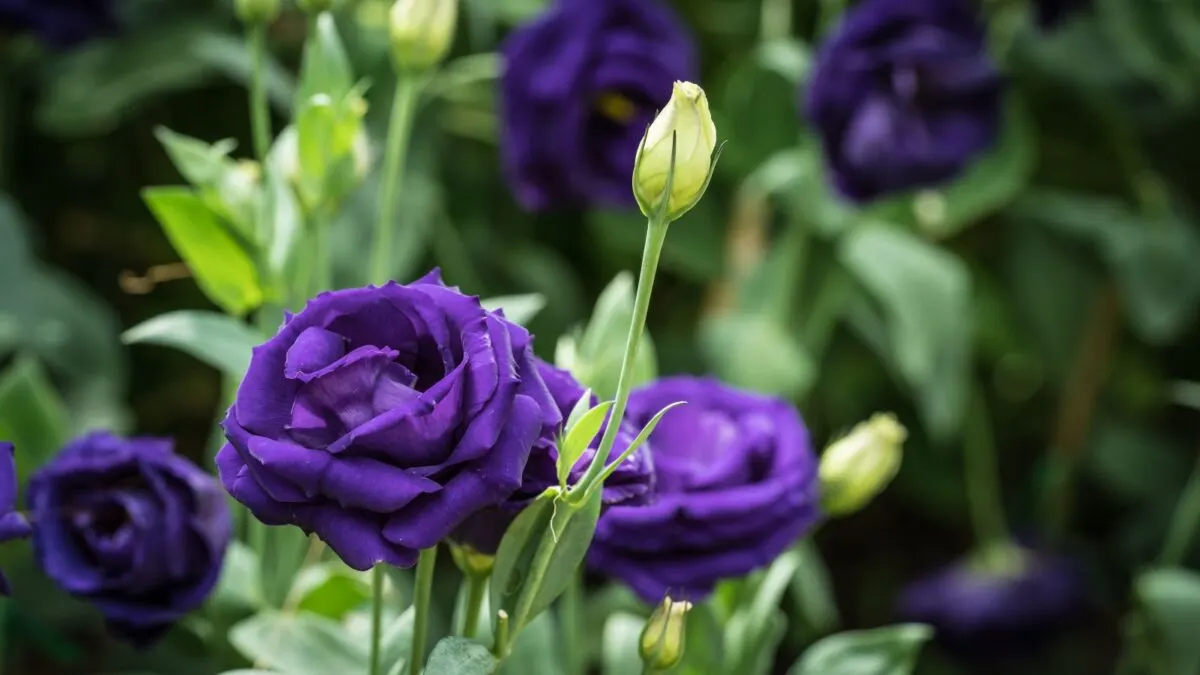
Something like an annual rose, lisianthus produces stunning ruffled blossoms in shades of blue violet as well as white and pink. Most cultivars grow 18 to 30 inches tall and bloom throughout the summer. The flowers are great for fresh arrangements.
Though biennial in USDA zones 8-10, lisianthus is most often grown as an annual. This beautiful drought-resistant flower prefers moist, well-drained soils and does best with morning sun and afternoon shade.
2. Angelonia (Angelonia angustifolia)
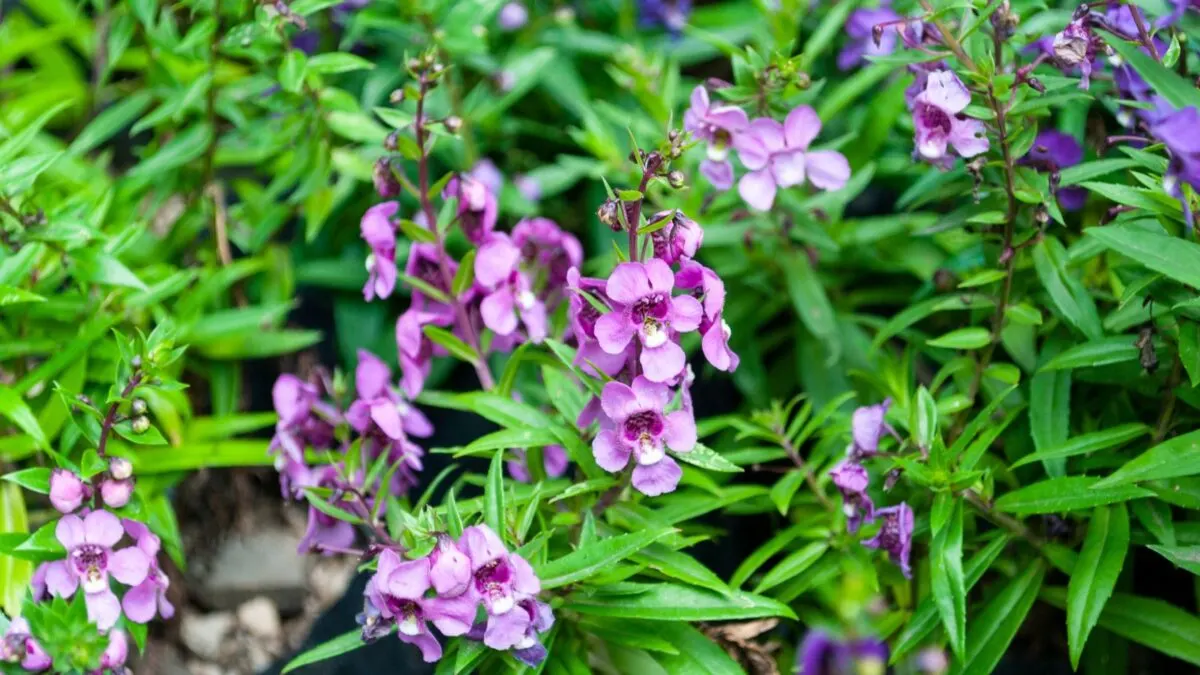
Angelonia, sometimes called summer snapdragon, produces spires of snapdragon-like flowers all summer long, with no need for deadheading. This shrubby, sprawling tropical plant grows 12 to 18 inches tall.
It prefers full sun and moist, well-drained, fertile soil. Technically a perennial in its native Mexico and West Indies, Angelonia may overwinter in zones 9-11.
3. Blue sage (Salvia farinacea)

Known for its tall spikes of blue-violet tubular flowers, blue sage blooms intermittently from spring until frost. Its nectar feeds butterflies, hummingbirds, and bees. It forms dense, rounded clumps of aromatic leaves and grows two to three feet high.
Blue sage thrives in full sun and well-drained, moist to dry soil. Though often grown as an annual, it is winter hardy in zones 8-10.
4. Wishbone flower (Torenia fournieri)
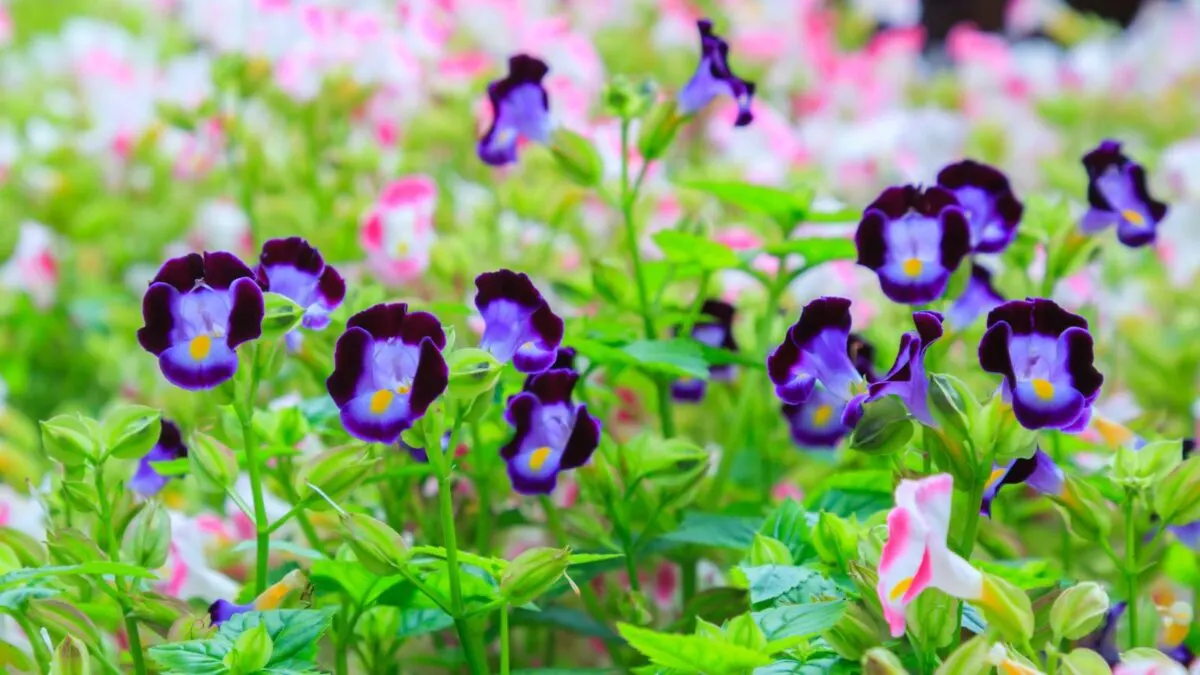
A low-growing annual, wishbone flower does especially well in hanging baskets and borders. The two-lipped tubular flowers are lilac and deep purple, with a yellow throat. Two stamens join at the anthers to form the namesake wishbone shape.
Wishbone flower likes moist soil and part sun to full shade.
5. Lobelia (Lobelia erinus)
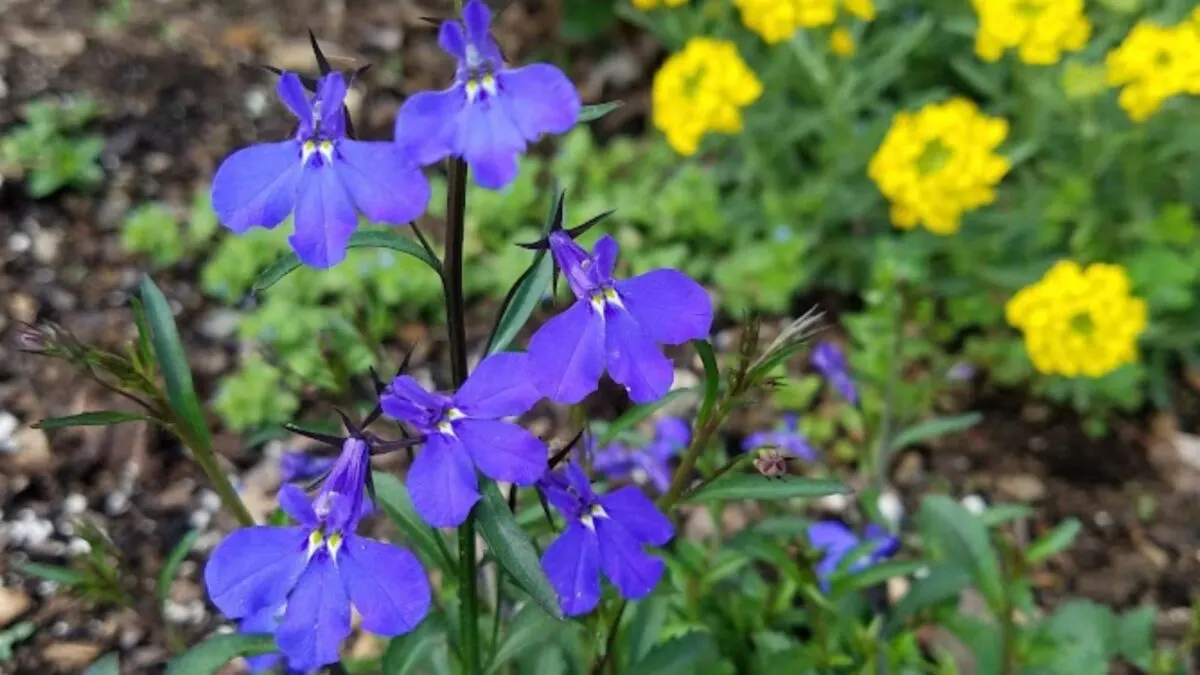
Lobelia cultivars range from small, compact, upright plants to traliing varieties perfect for hanging baskets or large planters. Colors vary as well, including lovely pale lavender and striking bright purple. Cutting the plant back after each flush of blooms will encourage flowering from spring until fall.
Plant lobelia in full sun to part shade. Overly damp conditions can lead to stem rot, root rot, or damping-off.
6. Johnny jump up (Viola tricolor)
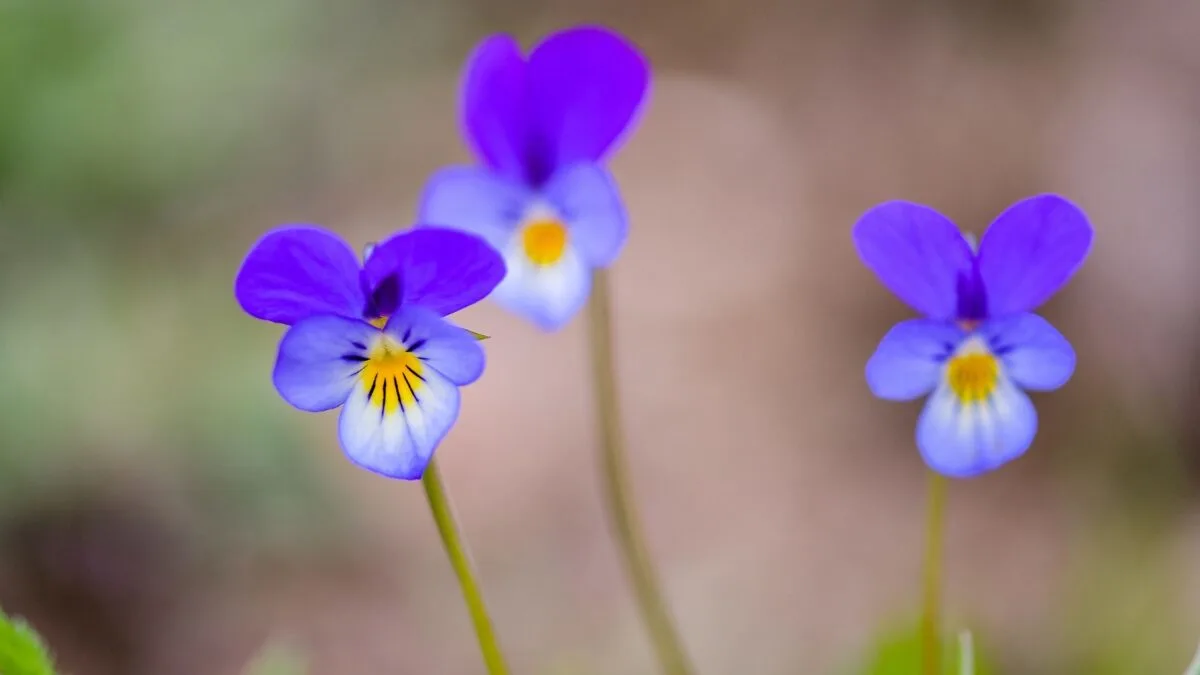
A small but vibrant plant, Johnny jump up has a cheerful name to match its smiling flowers. The tricolor blossoms, in violet, white, and gold, bloom spring to summer. Though short-lived, the plants readily reseed.
Plant Johnny jump ups in moist, well-drained soil in full sun. They appreciate regular watering, but take care not to overwater.
7. Sweet alyssum (Lobularia maritima)
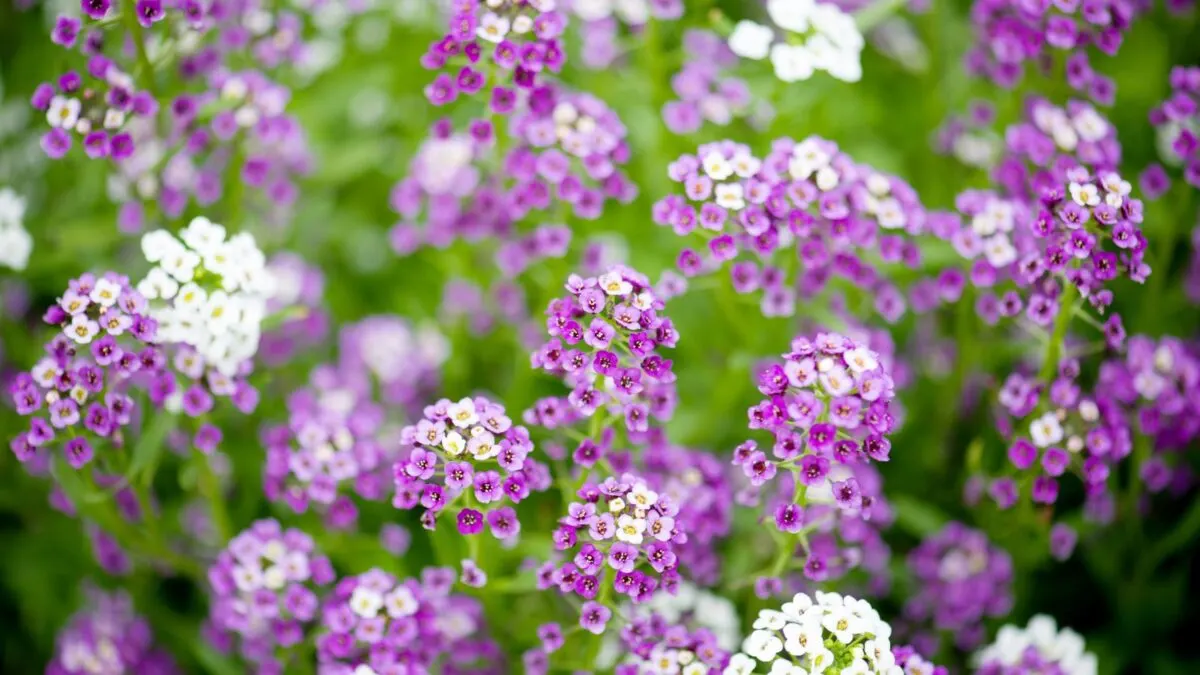
A low-growing, spreading annual, sweet alyssum makes a great filler between taller plants or stepping stones. It produces rounded clusters of tiny flowers, which will continue until fall if the plant is cut back in summer.
Sweet alyssum appreciates well-drained soil and grows in full sun and partial shade.
8. Larkspur (Delphinium spp.)
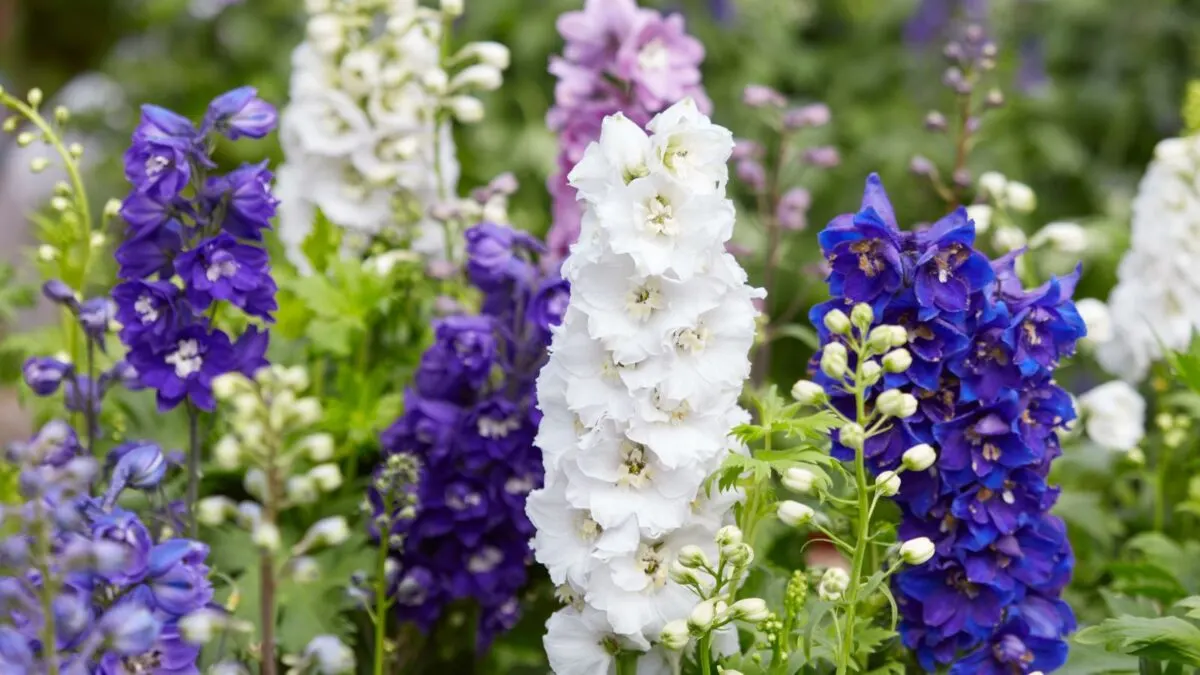
Delphinium, the genus of flowers commonly called larkspur, encompasses annuals as well as biennials and short-lived perennials. Many species are native to North America. All larkspurs produce showy flower spikes. Deadheading encourages late summer and fall reblooming.
Larkspur performs best in full sun and moist, fertile soil with good drainage. It might need some shade in hot summers.
9. Petunia (Petunia x hybrida)
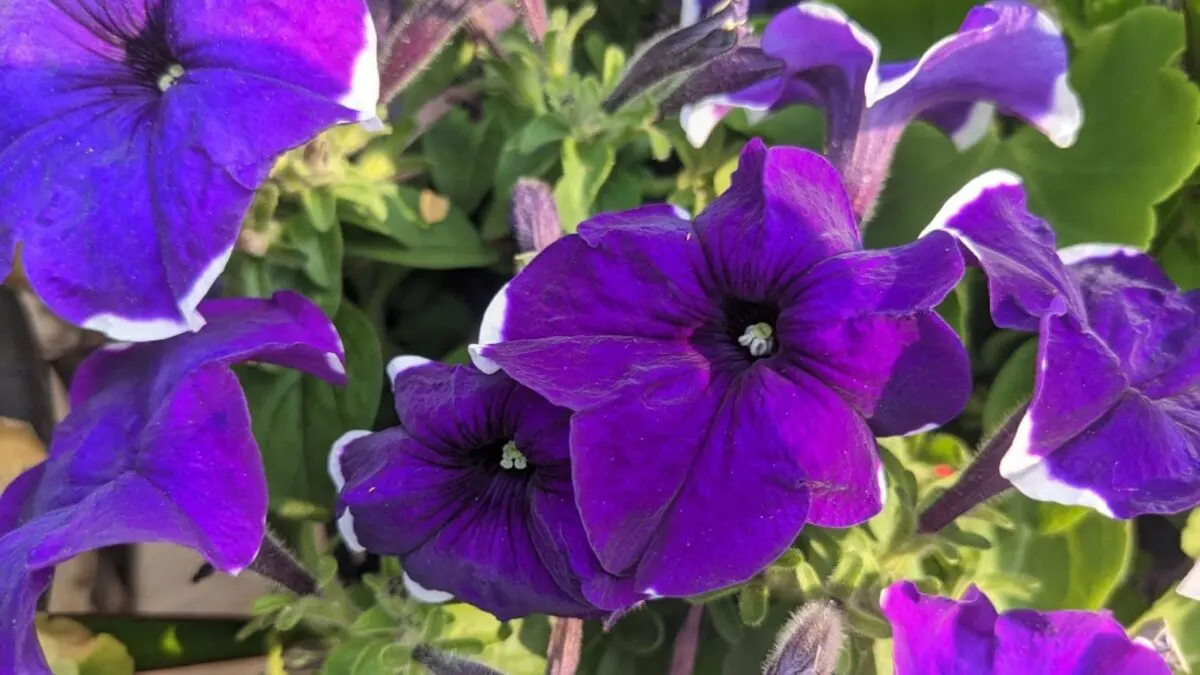
The classic garden petunia comes in numerous colors, including a range of purple hues. Their bright colors and easygoing nature make landscaping with petunias a joy. Plant them in beds, borders, containers, hanging baskets, or anywhere you want these colorful trumpet-shaped blooms.
Petunias thrive in full sun to partial shade but will tolerate heavy shade. Their only soil requirement is good drainage.
10. Sea lavender (Limonium sinuatum)
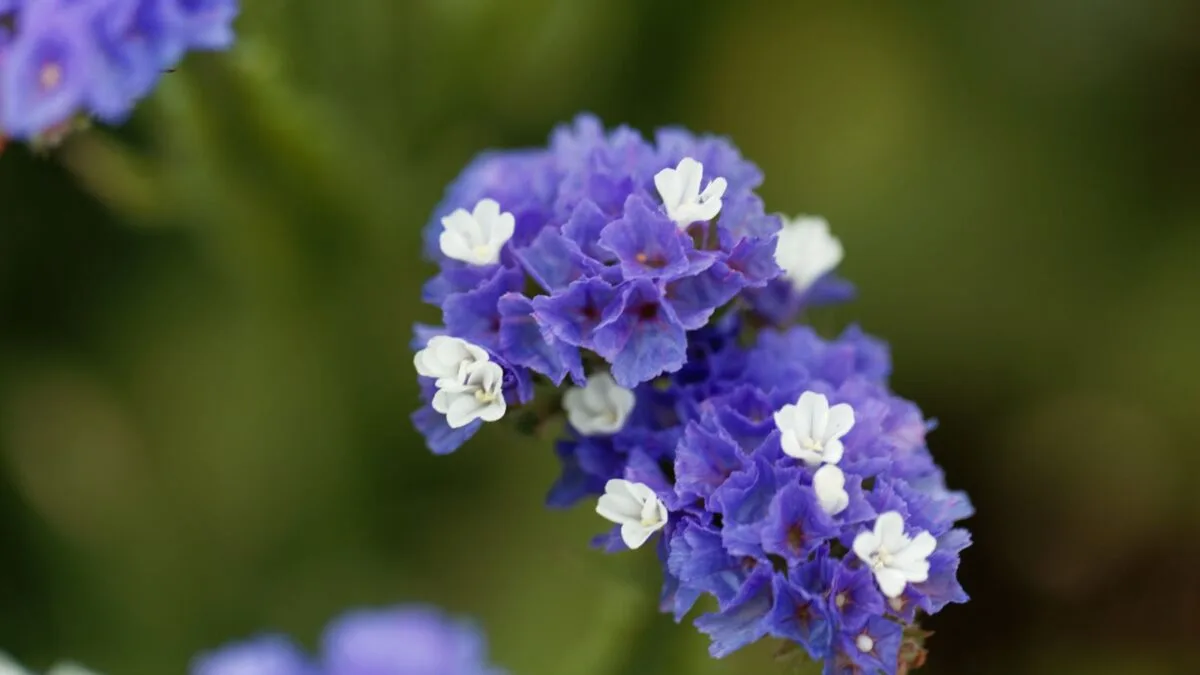
Named for its seaweed-like foliage, sea lavender also tolerates salt in the soil. It produces clusters of tiny, cup-shaped flowers that retain their color when dried, making them great for dried arrangements. Sea lavender grows equally well in borders, rock gardens, containers, and cutting gardens.
This drought-tolerant plant prefers full sun and sandy to loamy, well-drained soil.
19 Purple Succulents for Your Garden
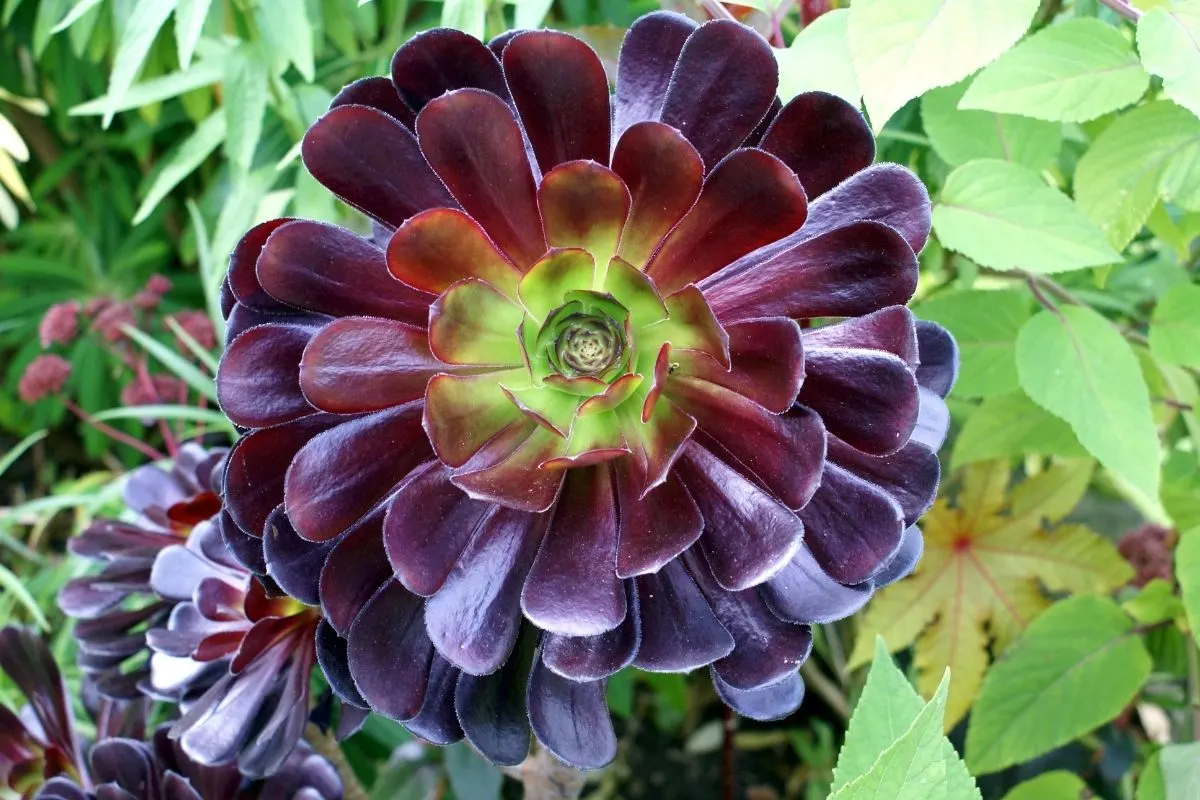
Did you know that succulents aren’t always just green? Of the many colors they can be, purple succulent plants are some of my favorites.
Here are 19 purple succulents to add to your garden.
15 Creative Ways To Landscape With Lavender
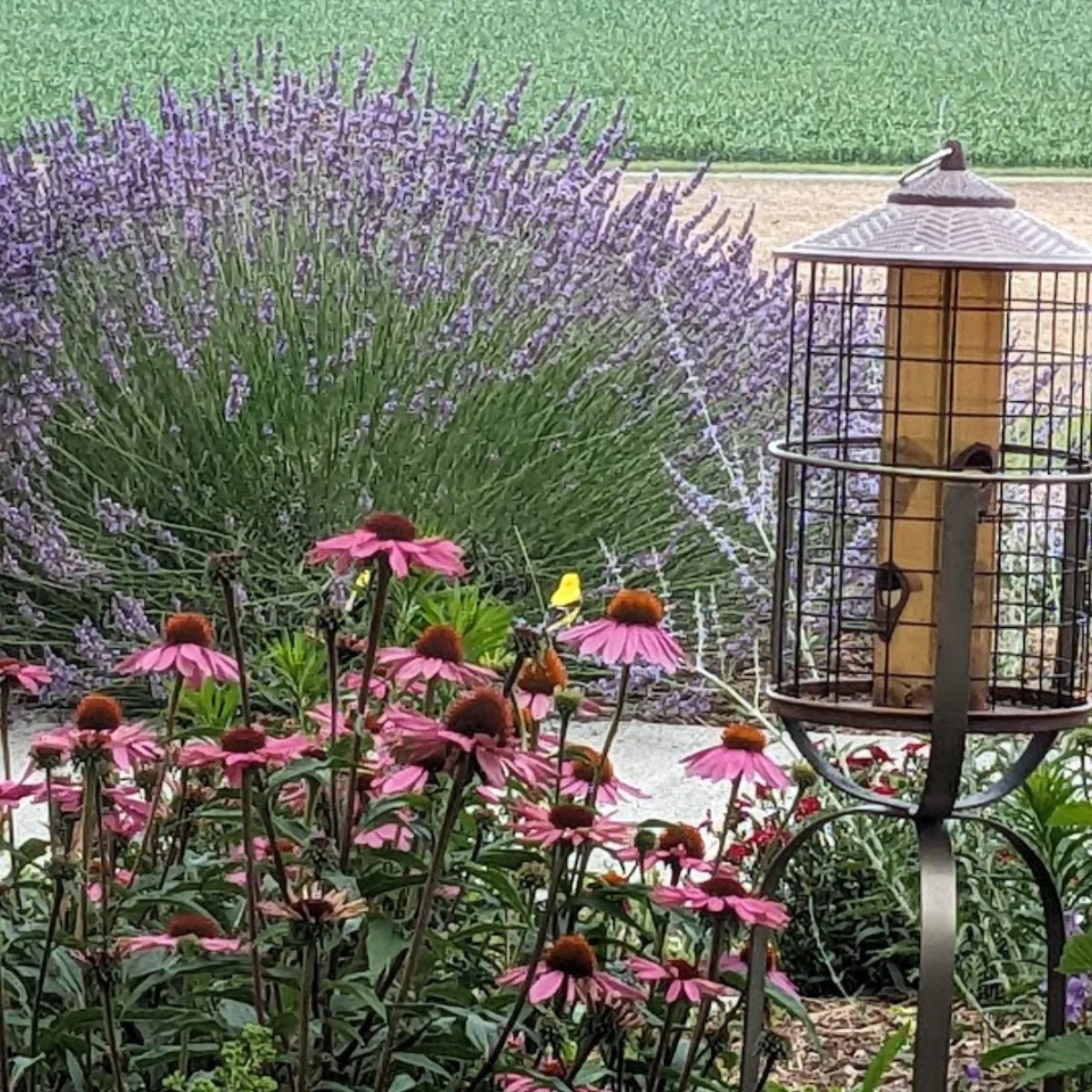
Lavender is such a beautiful plant to landscape with! And since it’s a perennial, you only need to plan your landscape once and enjoy it for many years to come. A lavender field is stunning in the summer, and the silvery foliage adds interest to the garden even in the winter.
Check out these beautiful ideas for landscaping with lavender.
Serena Manickam is a freelance editor and writer and sustainable market gardener in rural Virginia. She holds a BA in environmental science and runs Fairydiddle Farm, a small market garden in which she grows no-spray produce and herbs to sell at a local farmer’s market.

